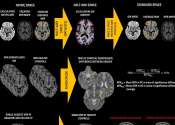Artificial intelligence tool detects sex-related differences in brain structure
Artificial intelligence (AI) computer programs that process MRI results show differences in how the brains of men and women are organized at a cellular level, a new study shows. These variations were spotted in white matter, ...
May 14, 2024
0
129









